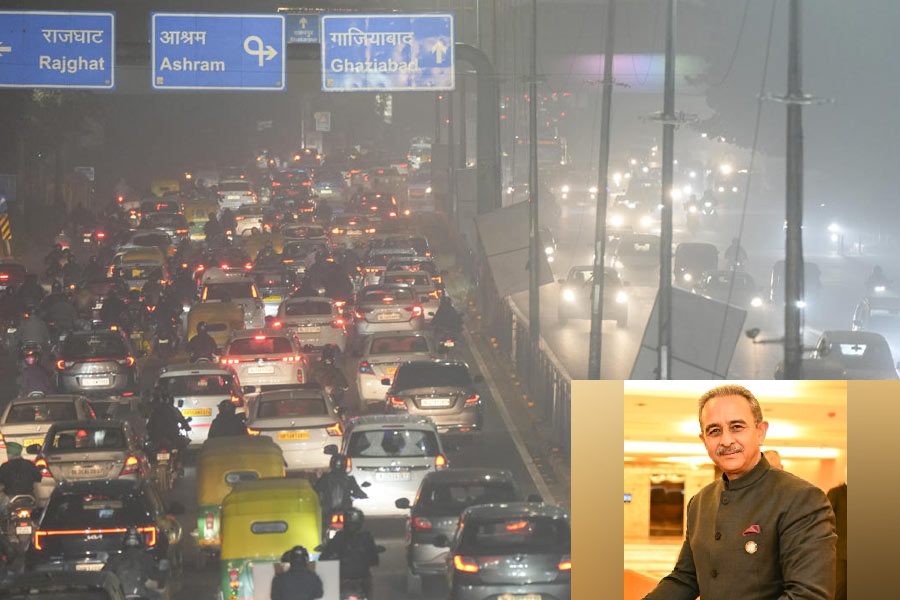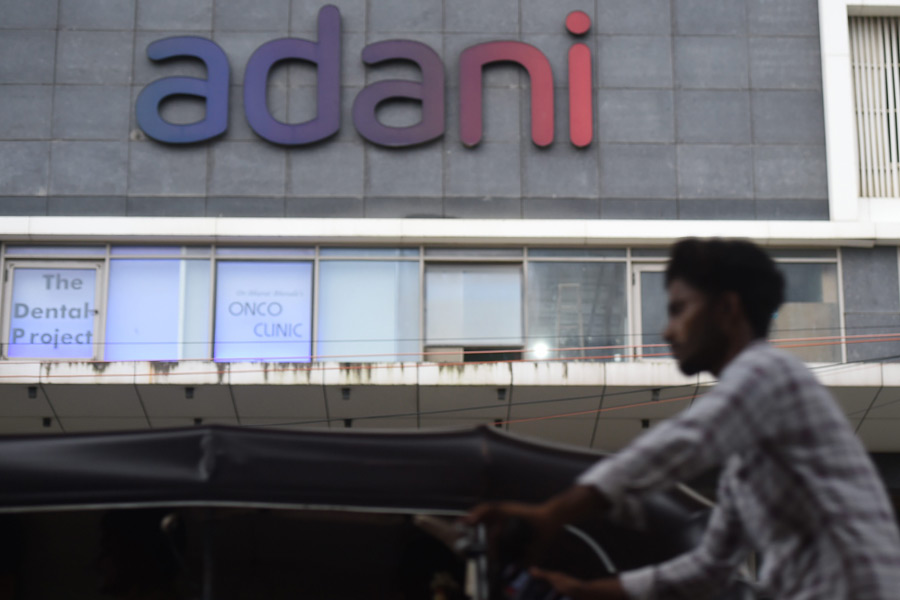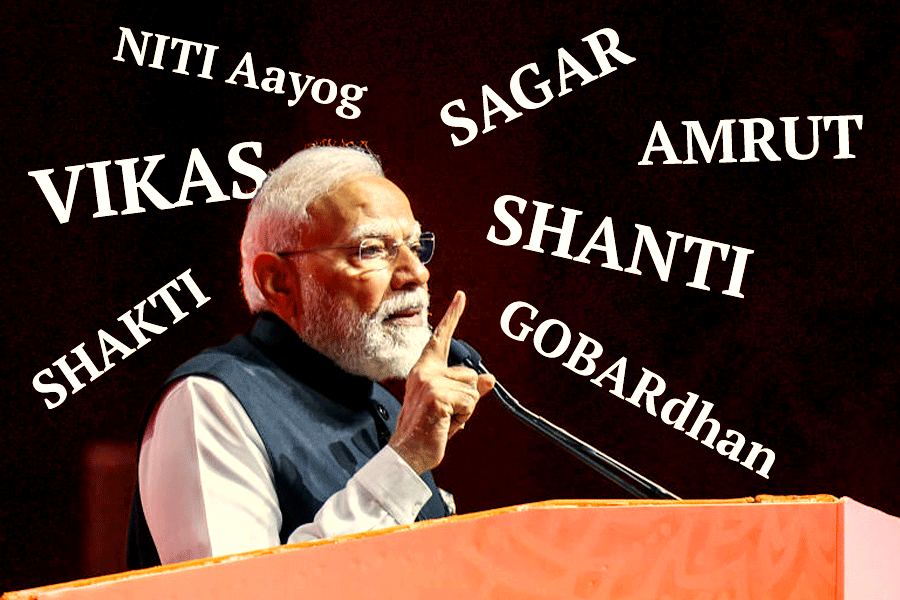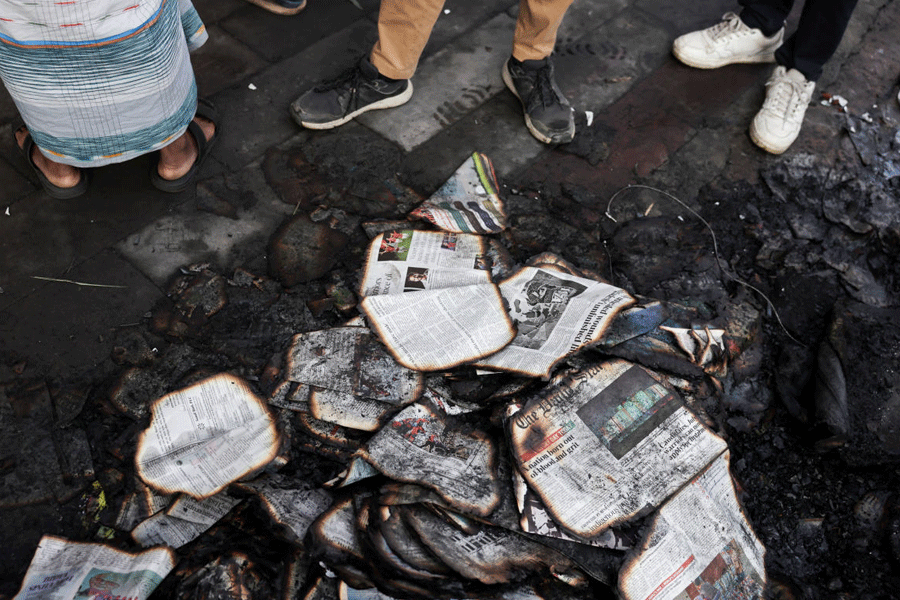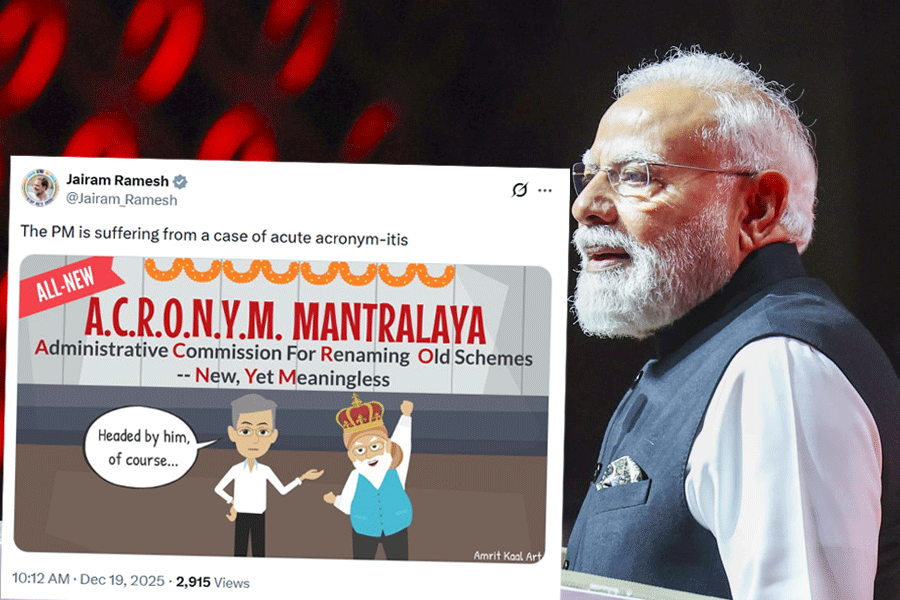|
|
Like a magic balm, Ustad Amjad Ali Khan’s sarod recital soothed bruised minds and sore ears between 3 am and 7 am in the last session of the Dover Lane Music Conference (Nazrul Mancha, January 22-25). There was enough in the four nights that irritated. First, the rock-level volume and resultant jarring distortions at sitar player Purbayan Chatterjee’s recital (Jan 21, slot 3). Chatterjee also largely forgot to use the pancham in what he called raga Malgunji. Second, the caterwauling and general murder of Darbari Kanada by Pakistan singer, Sharafat Ali (Jan 24, slot 3), who sounded like a giant cat on a hot tin roof. Third, the wayward use of the gandhars in raga Jog by sitar player Shahid Parvez (Jan 24, slot 5) and by the vocalist, Rashid Khan (Jan 25, slot 3). Rashid, possibly in response to the Pakistani’s warlike noises, made even more explosive ones. Fourth, Ajoy Chakrabarty’s Nat Bhairav, which sounded more like some kind of Nat for long stretches, and finally, the tasteless disruption of flautist Rajendra Prasanna’s (Jan 24, slot 2) recital by a conference official for an unnecessary announcement.
Moreover, though some repetition of ragas is inevitable in a four-night programme, the repetitions assumed alarming dimensions. One had to hear Malkauns and Jog thrice and Ahir Bhairav, Gorakh Kalyan and Sohini twice.
Amjad Ali Khan (picture) began with a cool alap in Jhinjhoti, getting the maximum out of komal nishad by gliding it in from the sadaj. There was lyrical melody and lilting rhythms in the vilambit teental gatkari. The drut jhaptal gatkari in Durga was in his best tradition. The drut teental gatkari quickly developed into typically Amjad saath-sangat with the twin tabla players, Tanmoy Bose and Samir Chatterjee. The ati drut teental gatkari, beginning with some bolkari, developed into fast jhala. After a dadra dhun based on Pahadi, there was a mini-alap in Komal Rishav Asavari, in which he put in a Bilaskhani-like re ga re Sa that I did not like but has a precedent in beenkar Asad Ali Khan and is therefore also authentic. The gatkari was in Bhopal Todi (Sa re ga Pa dha).
He then played alap and drut jhaptal gatkari in his version of Anand Bhairav, which is actually Bhatiyar with a Bhairav Ga Ma re tail. The first gat was in Pancham Sawari, the 15-matra tala. Then there was the inevitable Bhairavi-ragamala aochar, which led to sitarkhani gatkari in a composition that could be called a sort of Bhupali with a komal dhaivat and concluded with the well-known Bhairavi dadra composition.
On the first night, I missed Lucknow-based sarod player Narendranath Dhar’s main offering but could see a greater influence of Amjad Ali Khan in the deepchandi gatkari in Mishra Kafi. Sandip Bhattacharya’s Malkauns khayals were sung in a powerful and tuneful voice. Malini Rajurkar’s vilambit khayal in the classic Chandrakauns (Sa ga Ma Dha ni) started in a dull and repetitive mode but picked up once the taankari started. The variety of short taans in the drut khayals was impressive and so was the ragamala song. Shiv Kumar Sharma presented excellent rhythmic patterns in his gatkari in Ahir Bhairav. The alap was routine, though much better than those by his followers.
On the second evening, Kaivalya Kumar Gurav showed enough skill and artistic mettle in his khayals in Gorakh Kalyan and Sohini though he should not have ended some taans on the dhaivat in the second raga. Ustad Ali Akbar Khan’s son, Alam, played Kaunsi Kanada in the manner of his father but without the required genius. There was nothing to write home about Veena Sahasrabuddhe’s khayals in Jog other than that she had changed the tune of the vilambit composition in a couple of places and that she used the inappropriate Malkauns phrase, ga Ma ga Sa, at times. Her khayals in Hemant were hard to recognize as she missed out the pancham for long stretches. Ali Ahmed Hussain wasted a lot of time by talking before starting his alap and gatkari in Malkauns, which were good to hear. Ajoy Chakrabarty made amends for his experimentations with Nat Bhairav by singing Bhairav Bahar like a master.
Anindo Chatterjee’s tabla solo gave the third night a good start and flautist Rajendra Prasanna playing Gorakh Kalyan in the khayal style sounded much better than what Hariprasad Chaurasia normally does. He was backed with gusto on the tabla by Samar Saha. Sharafat Ali’s cacophony came next. Shahid Parvez was a relief after him, despite the aberrations in his Jog, and mainly because of his Ahir Bhairav, which was a cut below superb because of two brief aberrations. Finally, Rajan and Sajan Mishra indulged more in unmitigated dramatic utterance than proper khayal singing in their Bilaskhani Todi. The pieces in Gurjari Todi, however, were much better.
On the last night, Ashwini Bhide Deshpande was more impressive in her Rageshree drut khayal than in the vilambit. The khayals in Bihagda were her best items. The Paraj drut khayal was not very much behind them. Sitar player Shubhendra Rao’s Jogeshwari was a true copy of his guru Pandit Ravi Shankar. His Manjh Khamaj gatkari showed more individuality.



